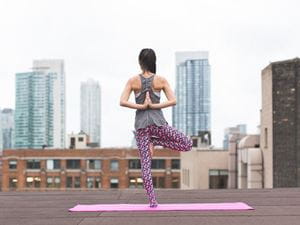Meditation has become wildly popular in recent years. It seems like everyone from entrepreneurs to psychologists to health gurus are recommending it to help deal with stress, weight loss, depression and everything in between. It is not all just hype either. Meditation really does have an incredible number of benefits, and it can help you improve almost every aspect of your life. Unfortunately, many people know that they should take up meditation but do not do so. Some people have trouble forming a habit and making it stick. Others are unsure of how to start meditating. Still others sit down for a few minutes and attempt to achieve clarity and inner peace only to spend the entire time shifting uncomfortably and trying to ignore the way that relaxing ocean ambiance just makes them have to go to the bathroom. After they try and fail to meditate successfully a few times, they assume it is not for them. If this has happened to you, do not despair. The problem may not be with you but with the type of meditation you are trying to practice. Here are some of the most common forms of meditation that may help you find what type of meditation is right for you.
Mindfulness Meditation

Shutterstock.com
Mindfulness has recently become a buzzword in the self-help community. Mindfulness is said to help cure any number of ills and is often seen as a goal of meditation. Not all meditations, however, are geared toward mindfulness. If you want to become more mindful, you should practice mindfulness meditation. To do so, find a quiet place where you can remain undisturbed for several minutes. Turn your phone to silent or turn it off. Then, sit in a position that you can hold comfortably for several minutes and concentrate on the present moment and let your racing thoughts slow and fall away. Most people do this by focusing on their breathing or heartbeat without trying to control it. Others prefer a repetitive sound to focus on such as ocean waves, a crackling fire or even shamanic drums played in a steady rhythm. Regardless of what you use as a focus, the goal is to remain in the moment, not focused on what you will do when you are done meditating.
Moving Meditation

Unsplash
There are some people who never quite manage to outgrow the stage of childhood where sitting still for any length of time feels like something that the Spanish Inquisition invented. Despite what exasperated teachers and exhausted parents said, being fidgety is not normally something that interferes with an adult’s daily life. After all, no one cares if you cross and uncross your legs at your desk or stand up to get a file from the filing cabinet instead of pushing your chair a few inches to the side so you can reach. Being fidgety can, however, make meditating difficult. For those who want to mediate but loathe sitting still, try out moving meditation. Walk laps around your house and focus solely on the movements of your body. You can also do slow-down versions of martial arts katas using Tai Chi, Aikido and Karate. What movement you do is more or less irrelevant. In fact, martial arts and even archery has been used as a form of Zen Buddhist meditation, called “Kyudo”, for centuries. What matters is that you focus purely on your body and let your mind clear.
Yoga

burstshopify.com
When people think of meditation, yoga is probably only a thought or two behind. This is because yoga is an excellent way to get into a meditative state of mind. Many Western yoga studios focus on the exercise component of yoga, but yoga was originally invented by ancient Hindus in order to act as a form of meditation and spiritual practice. This legacy still lives on in some yoga studios especially those who focus on more obscure yoga traditions, such as Kundalini Yoga, rather than only the “asanas” or poses that most Westerners think make up the entirety of yoga.
If you are short on time, yoga can be a great way to kill two birds with one stone. Focus on each pose and the muscles you are using to get a meditative experience. The poses themselves will help you get some exercise, and a careful focus on your muscles has actually been shown to increase the amount of work you get out of your muscles thus improving your exercise.
Guided Meditation

Shutterstock.com
Learning how to meditate can be a frustrating practice. You know that you are supposed to be clearing your mind, but instead you find yourself having to focus on the little components that make up meditation. While you are trying to remember to breathe with your stomach, avoiding rounding your shoulders and keeping your spine straight, the mind you are supposed to be clearing is filled with a constantly running checklist of what you are supposed to be doing in order to meditate. This, of course, can negate the entire point of meditation. If you find yourself getting frustrated and having no idea what to do when you sit down to meditate, try a guided meditation. Videos and audio recordings of practiced meditators talking through a meditation are available all over the internet. Follow along with one the next time you try to meditate and save yourself the headache of trying to simultaneously clear your mind and remember the next step in your meditation. As you become more experienced you can decide whether to continue following guided meditations or to do meditations on your own.
Kindness Meditation

shutterstock.com
One of the benefits of regular meditation practice is that you become more compassionate, kind and empathetic. Although this is a common benefit of most forms of meditation, there are several types of meditation that focus specifically on increasing a person’s kindness and compassion. Some forms of this sort of meditation focus on being self-compassionate, a skill that is difficult to acquire regardless of how many self-help blogs chant that you need to love yourself. Metta meditation, also called loving-kindness meditation, focuses on helping you develop more compassion for other people by beginning with those you love and continuing until you can wish good things on even people who have hurt you in the past. Forgiveness mediation is exactly what it sounds like and focuses on helping you forgive both yourself and others. Tonglen meditation, meanwhile, encourages people to learn how to let go of selfishness and embody a more selfless attitude.
Progressive Relaxation

Shutterstock.com
Progressive relaxation is a form of meditation that, like moving meditation and more Western forms of yoga, clears the mind of racing thoughts by forcing the practitioner to focus on their body. Unlike with moving mediation and yoga, however, practitioners of progressive relaxation are focused on relaxing and unclenching muscles rather than paying attention to how they flex and tighten when you move. To do progressive relaxation, lay or sit down somewhere comfortable and pay attention to how your body feels. Notice where your muscles are tight or tense. Then, starting with either your head or your feet, work your way up or down your body until you reach the other end. As you mentally work through your body, focus on each muscle group individually and deliberately relax it until all of your muscles are loose and at rest. Progressive relaxation is not meant to be invigorating or to focus the mind as much as many other forms of meditation. It instead focuses on relieving stress and tension. Rather than meditating in the morning, many practitioners use progressive relaxation at night to let go of the day’s stresses and help them get a good night’s sleep.
Koan Meditation

Shutterstock.com
Some people simply are not built to empty their minds. Their thoughts are always careening around the inside of their skull, and they are too good at mentally multitasking to focus on their body and clear their mind of other thoughts. If this sounds familiar to you, you might benefit from practicing koan meditation. Koans are commonly used in Zen Buddhist meditation in order to help train practitioners to look at the world differently and begin to unravel false beliefs. A koan is a riddle or puzzle that cannot be solved by normal logic and reason. A Zen student instead turns a koan over in their mind for weeks, months or even years until they manage a spiritual breakthrough that answers the impossible question and leads them closer to enlightenment. You may not necessarily be hunting for enlightenment, but focusing on a koan can help you if you find it easier to bathe a bag of wet cats than turn off your thoughts. The oddity of the koan can keep you focused on it, and the bizarre backwards thinking required to make sense of it can help you become more of a creative thinker and a better problem solver. Focusing on the koan will also get your mind off any problems or issues you are having in order to help you take a break from and relieve your stress.
Meditation has many benefits. Thankfully, even people who are jittery, easily distracted and incapable of sitting in silence for more than 30 seconds at a time can find a type of meditation that works for them. It will take some trial and error and requires patience, but you can and will find the type of meditation that works best for you. Then, all you need to do is make yourself do it. That, of course, is easier said than done, but at least you will no longer be struggling to practice a skill that was not a good fit for you in the first place.
